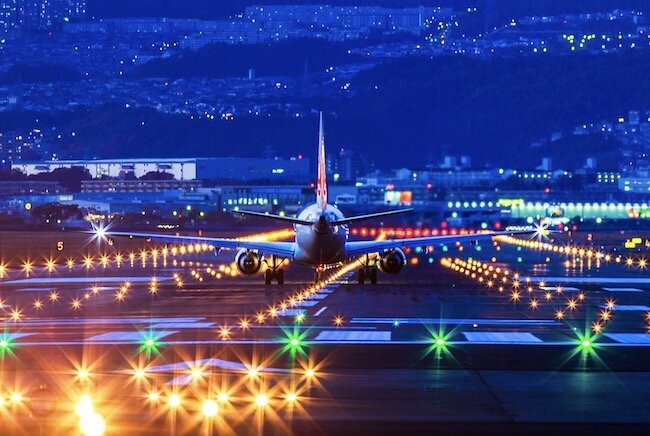Landing a large commercial aircraft is a challenging manoeuvre that involves many variables – such as: wind direction and speed, weather conditions and the length and positioning of the runway. Airports have a universal system of coloured ground lights that aid a pilot in landing safely; all of which are controlled by the traffic control tower. The network of lights that greet an arriving plane are rather complex. Let’s take a look at the principal groupings of lights that a pilot will encounter between touchdown and docking.
1. Approach Lights. There are several different formations used for these lights which are visible from up to twenty miles away in the dark. They consist of a series of unilateral white, red, green and yellow lights that help the pilot locate the correct glide-path and align the plane with the centre line of the runway.
2. Threshold Lights. A line of evenly spaced green lights run across the full width of the start of the runway. These indicate the beginning of the “safe-to-land” zone.
3. Edge Lights. These lights define the runway’s width. White lights spaced no more than 200 feet apart line the sides of the tarmac. On instrument runways, the last half of the edge lights are yellow, indicating the final stretch of the runway.
4. Centre Line Lights. The middle of the runway is designated by white lights spaced fifty feet apart. These lights will alternate between white and red for 2000’ of the final 3000’ of runway. For the final 1000’, the lights are red.
5. Taxiway Lights. Once a plane has landed, the control tower will highlight a plane’s designated taxi lane with green edge lights and blue centre lights.
It may sound complicated, however pilots quickly become familiar with this colourful light system with every night landing they execute.
